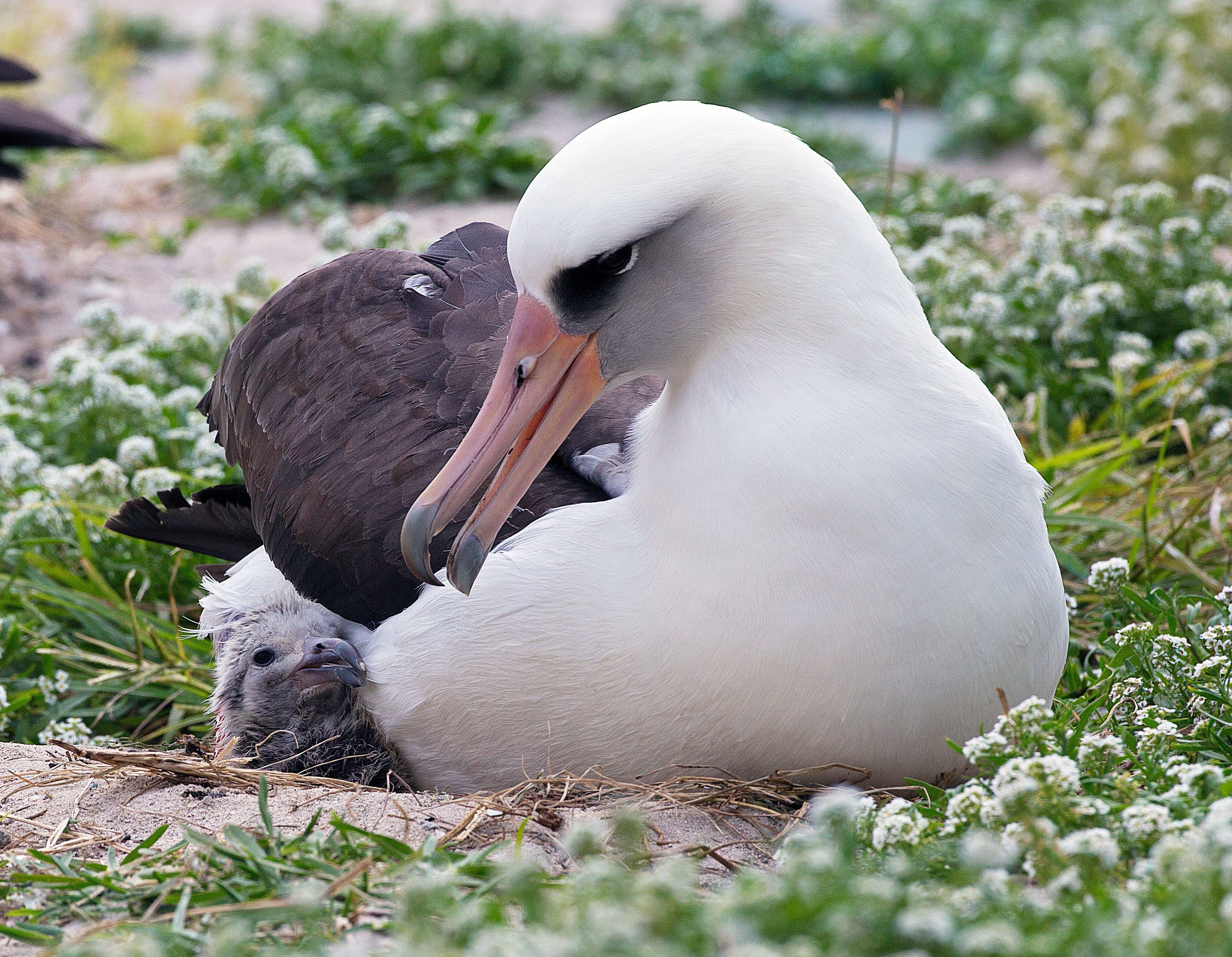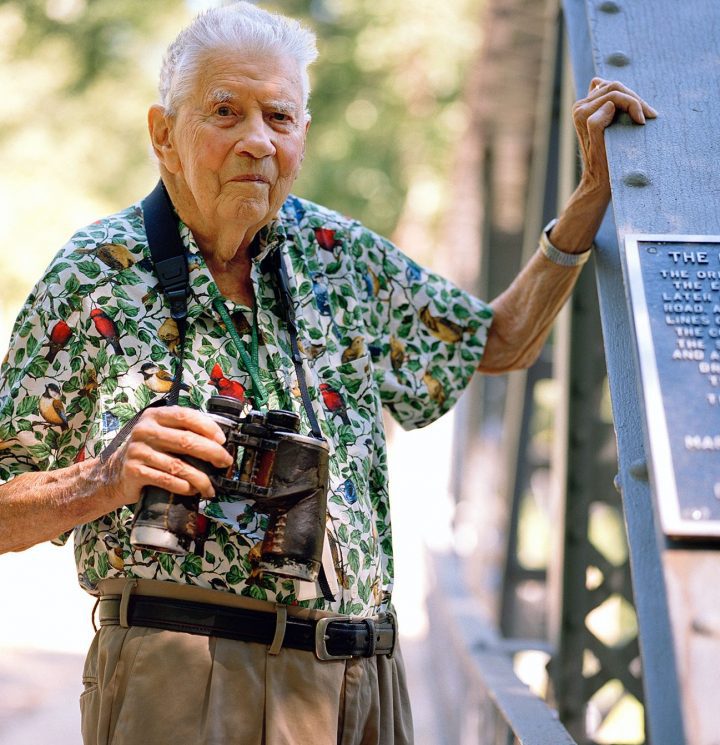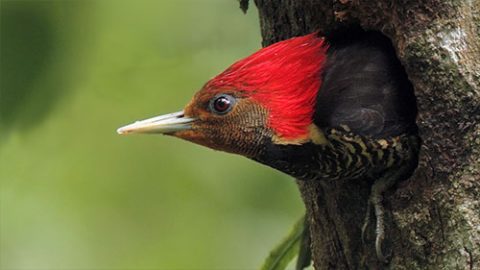Q&A: Chan Robbins Talks About Wisdom, the World’s Oldest Banded Bird
By Anne W. Semmes
From the Summer 2016 issue of Living Bird magazine.
July 6, 2016
For two living legends, 2016 is a celebratory year: the 60th anniversary of Wisdom the Laysan Albatross getting her first leg band by Chandler “Chan” Robbins, who turns 98 on July 17.
Robbins worked for 73 years at the Patuxent Wildlife Research Center in Maryland, creating the annual North American Breeding Bird Survey and coauthoring the Golden Guide—Birds of North America—with over 6 million copies sold. Wisdom is the oldest banded bird in the wild. On February 1 she hatched what is estimated to be her 40th chick on her historic home ground at the Midway Atoll National Wildlife Refuge, located in the farthest reaches of the northwestern Hawaiian Islands.
Wisdom’s spectacular survival record includes having flown the estimated equivalent of six round-trips to the moon (an albatross spends 90 percent of its lifetime in flight); having survived two tsunamis; and, having avoided fishing longlines with baited hooks.
How does Wisdom do it? Robbins, who has made 10 trips to Midway over the past six decades, thinks the elder albatross has learned how to avoid the dangers facing seabirds and has a lot to teach us humans, too.
How has Wisdom so successfully read the weather, chosen a mate, and managed feeding her chicks while traveling thousands of miles foraging?
[Wisdom] is demonstrating that the Laysan Albatross has an exceptionally long reproductive life.I like to think that in all her years Wisdom has learned to avoid most of the hazards that threaten seabirds. When I first banded her she was nesting on the station hospital lawn where she was protected from tsunamis, but the site had overhead wires and was close to truck traffic. When I recaptured her many years later she was nesting a quarter-mile away, still protected from tsunamis, but with no overhead wires or traffic. They break their wings if they connect with wires, and they show no fear of traffic.

Once when I was riding my bike past the hospital an albatross flew into me and caught its wing in the sprocket, bringing the bike to a sudden stop and throwing me over the handlebars. It was one of the few times in my 10 winters at Midway that I ended up in the hospital.
What can Wisdom teach us about how to help albatrosses?
We need to work harder to persuade commercial fishermen not to use equipment that is likely to attract and kill seabirds, and above all teach people to never throw bottle caps, toothbrushes, and other floating objects into the ocean.
Might you wish that Wisdom, if found again, be fitted with the latest solarpowered satellite tracking technology?
I would not want her to wear a solar satellite. Let some of her younger friends do it.
Learn More
- Facing Into the Wind: The Complicated Fate of the Laysan Albatross
- All About Birds species guide: Laysan Albatross
- Bird Cams: Live Laysan Albatross Nest Camera

All About Birds
is a free resource
Available for everyone,
funded by donors like you
American Kestrel by Blair Dudeck / Macaulay Library



